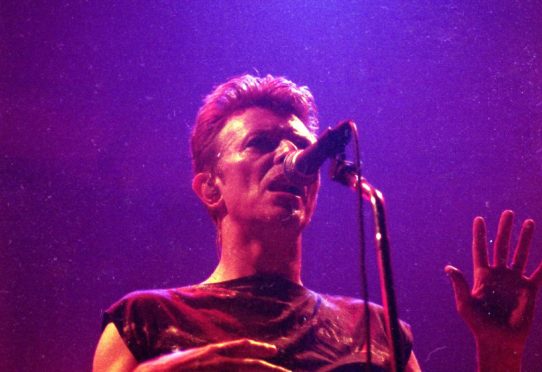As a child I dreamed of being invisible.
When I became a journalist I dreamed about it even more.
Thinking back, I wonder if I was trying to escape something as a child.
Maybe the time bullies locked me in a classroom every lunchtime when I was about nine to pelt me with tennis balls, as I scampered on all fours between desks.
I was also glued to an ancient TV series called The Invisible Man, which terrified me when he revealed himself to mere mortals by covering himself from head to foot in bandages and wearing a trilby. At least he was more of a superhero than the original H G Wells character, who was a homicidal maniac.
How I wish a superhero had rescued me from that nasty target practice.
Being invisible, or hiding away, from threats surfaces in two shows next week at TechFest festival in Aberdeen. They take place on the same night in the same building – two very different events, yet inextricably linked in some ways.
Science magician Matt Pritchard is an unusual fusion of two elements – an accomplished atomic physicist and a member of the Magic Circle.
“Someone bought me a magic set when I was 10 and I just didn’t grow out of it,” Matt told me when I caught up with him a few days ago.
His “Superhero Science” show soars magically into the world of superheroes and the science behind it, and asks the question, “Could these heroes actually function in the real world?”
He believes that Iron Man and Batman might be able to go about their business for real (with some modifications), but others would just pass out all the time due to the G-forces they were pulling.
Also on the bill are Aberdeen University psychologists Amy Irwin, Ceri Trevethan and Emma Hepburn who offer practical advice in a colourful way to children and families blighted by online cyber bullies. They turn the tables on villains with their “Troll Hunting” show and how to “squash cyber trolls”.
It is about empowering young people to recognise and cope with all its insidious forms: harassment, stalking, flaming and impersonation, which cause despression and even suicidal thoughts.
Little Mix singer Jesy Nelson tried to kill herself after attacks by online trolls.
So it seems to me we can learn from superheroes. Not in a tit-for-tat war on social media, but by brave victims reaching out for help. There is more than one way to skin a cat, as they say.
I can’t get David Bowie’s “Heroes” out of my head as I write. A music scholar once described this inspirational 1977 rock song – often listed as one of the best of all time – as the greatest modern musical example of the power of human spirit over adversity.
The German Government later paid tribute to Bowie after his death and said the spirit and emotions set alight by Heroes helped bring down the Berlin Wall.
Maybe kids should have the song streamed to their devices automatically in some way to remind them every day that they can be superheroes against the cyber bullies.
The science might seem fanciful, but why not? As Matt Pritchard explained to me, what bubbles out of a writer’s imagination is often made real later by scientists. Batman, for example, took a finger-printing kit into battle before it was invented.
Matt says we never stop dreaming about having superpowers. It starts off as flying and invisibility, but even adults dream – about mind reading usually (very handy in business and politics or in the office).
Just for the record, I did ask – and he confided that he dreams of flying like Iron Man. He also mentioned that some kids who dream of being invisible might actually want to hide away from something bad which is going on in their lives.
Current anti-abuse campaigns show children trying to hide away and make themselves invisible under blankets in bed, or hoping to make their phone messages invisible by not looking – only to be tormented by the constant “blip” of unseen abuse flooding in.
“You can’t just tell children to switch off and it will go away,” Amy Irwin explained when we spoke about her team’s troll presentation. “It is now the fundamental way in which they socialise, it’s their way of life.”
As well as unveiling their comprehensive guide to beating the trolls next week, the psychologists are also embarking on further research which they hope will become a blueprint for children, schools and young people’s groups.
Both shows are not just for one day, but could inspire children in their lives ahead.
Bowie sang, “We can beat them, forever and ever, Oh, we can be heroes, just for one day”.
And look how that changed the world.
* “Superhero Science” is at 6.30pm on Wednesday 25 September in Fraser Noble Building, University of Aberdeen. “Troll Hunting” is at the same venue on the same day, starting at 7.30pm.
David Knight is the long-serving former deputy editor of the Press and Journal

